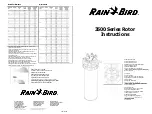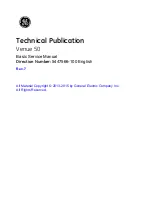
12
Troubleshooting
Many of the functions of the machine are controlled by a
series of electrical, hydraulic and mechanical components.
A good way to immediately exclude many of the sources
of faults is to first determine whether or not the fault is
electrical. Because of this, first check whether the
electrical circuit is intact right up to the last electrical
component in the chain.
Then continue troubleshooting by first performing the
easiest inspections, in order to quickly exclude other
sources of faults.
12.1
Hydraulics fault
General checks in the event of hydraulic faults:
•
Check that the hydraulic hoses are connected to the
correct socket on the tractor. Hoses with the same
colour coding constitute a pair.
•
Make sure the hydraulic quick couplers are designed
for and suited to the tractor's couplings. There is a
wide variety of connectors on the market, all
standardised but still there are problems. Problems
can manifest themselves so that female and male
couplings operate as non-return valves, that is, that a
machine can be raised but not lowered or vice versa.
The problem may be aggravated by a large flow or
worn couplings.
52
903815-en-gb; 23.09.2021



































